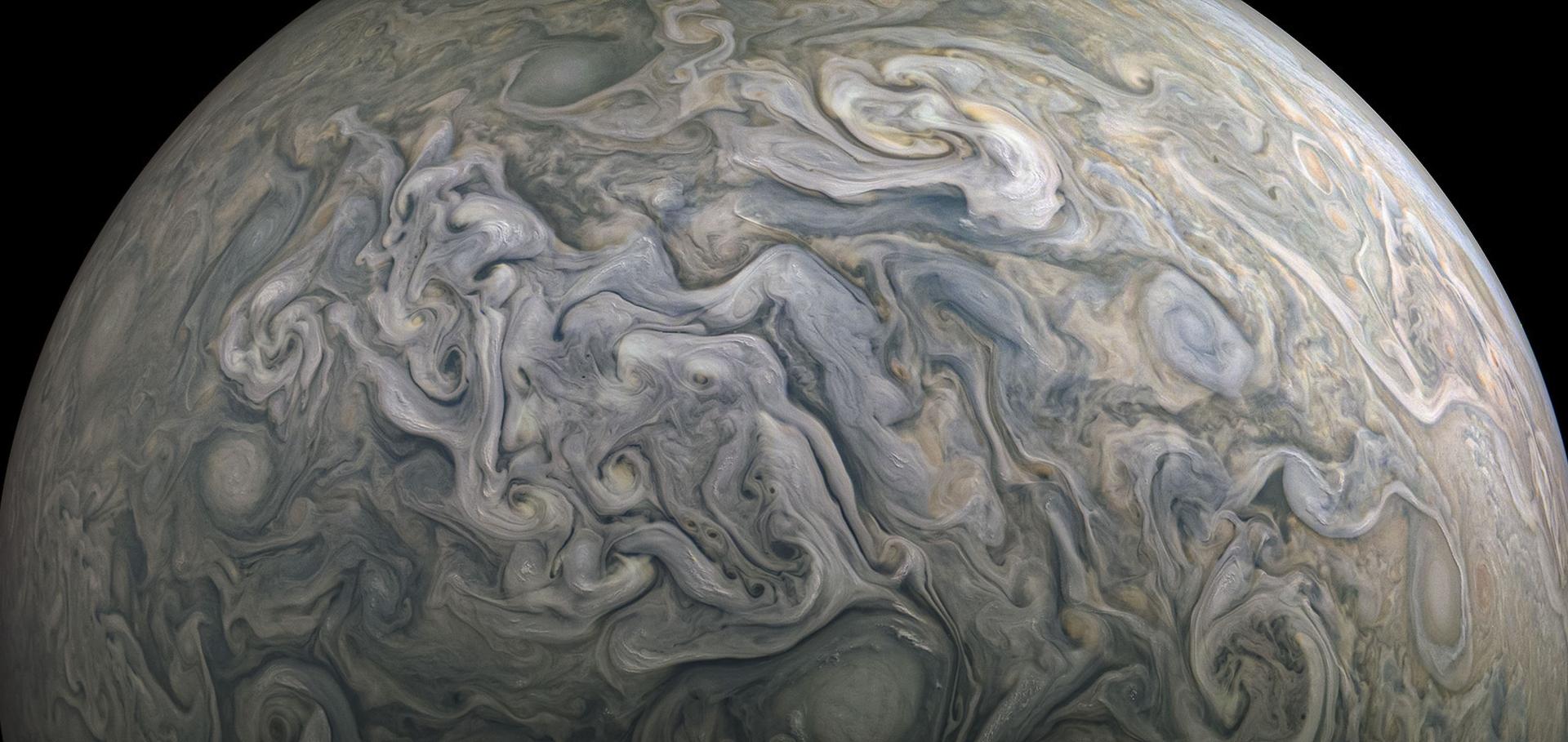Horizontal and vertical exoplanet thermal structure from a JWST spectroscopic eclipse map
Nature Astronomy Nature Research (2025) 1-12
Abstract:
Highly irradiated giant exoplanets known ‘ultrahot Jupiters’ are anticipated to exhibit large variations of atmospheric temperature and chemistry as a function of longitude, latitude and altitude. Previous observations have hinted at these variations, but the existing data have been fundamentally restricted to probing hemisphere-integrated spectra, thereby providing only coarse information on atmospheric gradients. Here we present a spectroscopic eclipse map of an extrasolar planet, resolving the atmosphere in multiple dimensions simultaneously. We analyse a secondary eclipse of the ultrahot Jupiter WASP-18b observed with the Near Infrared Imager and Slitless Spectrograph instrument on the JWST. The mapping reveals weaker longitudinal temperature gradients than were predicted by theoretical models, indicating the importance of hydrogen dissociation and/or nightside clouds in shaping global thermal emission. In addition, we identify two thermally distinct regions of the planet’s atmosphere: a ‘hotspot’ surrounding the substellar point and a ‘ring’ near the dayside limbs. The hotspot region shows a strongly inverted thermal structure due to the presence of optical absorbers and a water abundance marginally lower than the hemispheric average, in accordance with theoretical predictions. The ring region shows colder temperatures and poorly constrained chemical abundances. Similar future analyses will reveal the three-dimensional thermal, chemical and dynamical properties of a broad range of exoplanet atmospheres.Possible Evidence for the Presence of Volatiles on the Warm Super-Earth TOI-270 b
The Astronomical Journal American Astronomical Society 170:4 (2025) 226
Abstract:
The search for atmospheres on rocky exoplanets is a crucial step in understanding the processes driving atmosphere formation, retention, and loss. Past studies have revealed the existence of planets interior to the radius valley with densities lower than would be expected for pure-rock compositions, indicative of the presence of large volatile inventories, which could facilitate atmosphere retention. Here, we present an analysis of the JWST/NIRSpec G395H transmission spectrum of the warm ( Teq, AB=0=569 K) super-Earth TOI-270 b (Rp = 1.306 R⊕), captured alongside the transit of TOI-270 d. The JWST white light-curve transit depth updates TOI-270 b’s density to ρp = 3.7 ± 0.5 g cm−3, inconsistent at 4.4σ with an Earth-like composition. Instead, the planet is best explained by a nonzero, percent-level water mass fraction, possibly residing on the surface or stored within the interior. The JWST transmission spectrum shows possible spectroscopic evidence for the presence of this water as part of an atmosphere on TOI-270 b, favoring an H2O-rich steam atmosphere model over a flat spectrum ( lnB=0.3–3.2 , inconclusive to moderate), with the exact significance depending on whether an offset parameter between the NIRSpec detectors is included. We leverage the transit of the twice-larger TOI-270 d crossing the stellar disk almost simultaneously to rule out the alternative hypothesis that the transit light source effect could have caused the water feature in TOI-270 b’s observed transmission spectrum. Planetary evolution modeling furthermore shows that TOI-270 b could sustain a significant atmosphere on gigayear timescales, despite its high stellar irradiation, if it formed with a large initial volatile inventory.Possible Evidence for the Presence of Volatiles on the Warm Super-Earth TOI-270 b
(2025)
A carbon-rich atmosphere on a windy pulsar planet
(2025)
Circulation models and JWST observations of inflated ultra-hot Jupiters
Copernicus Publications (2025)


